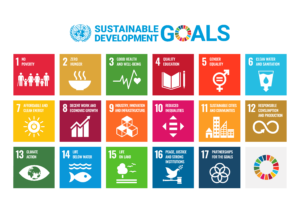When implementing the CSRD, it can be helpfull to understand the history of the European ESG legislation. This helps placing the large amount of written documentation that can be found more easily. Besides that, it will help understand how to apply them.
2000 Millennium Development Goals
It all started in the year 2000 with the Millennium Development Goals (MDGs). They were unanimously adopted by the member states of the United Nations at the UN Millennium Summit in New York in September 2000. These eight goals focused on reducing extreme poverty, improving education and health, promoting gender equality and ensuring environmental sustainability. They served as a global framework for development cooperation and mobilised both governments and civil society to make measurable progress in these areas by 2015.
The Millennium Development Goals (MDGs)
- Goal 1 Eradicate extreme poverty and hunger
- Goal 2 Achieve universal primary education
- Goal 3 Promote gender equality and empower women
- Goal 4 Reduce child mortality
- Goal 5 Improve maternal health
- Goal 6 Combating HIV/AIDs, malaria, and other diseases
- Goal 7 Ensure environmental sustainability
- Goal 8 Develop a global partnership for development
2012 Sustainable Development Goals

Twelve years later there was a new United Nations conference on sustainable development in Rio de Janeiro, Brazil in June 2012. The Rio+20 conference galvanized a process to develop a new set of Sustainable Development Goals (SDGs) which will carry on the momentum generated by the MDGs and fit into a global development framework beyond 2015. In this consultation process more than 9 milion people where involved leading to the 17 Sustainable Development goals and their sub goals.
These 17 goals, set out in the 2030 Agenda for sustainable development, are more ambitious and comprehensive than their predecessors. They cover a wider range of themes, including economic growth, sustainable consumption and production, and climate action. Importantly, the SDGs are universal and address both developed and developing countries, in contrast to the MDGs that were mainly focused on developing countries.
2019 European Green Deal
The European Union (EU) has integrated the SDGs into its policy frameworks and strategies. A central initiative here is the European Green Deal, presented in December 2019. This plan aims to achieve a climate-neutral Europe by 2050 through climate, energy, transport and tax policy measures. The Green Deal acts as the backbone of the EU strategy to achieve the SDGs, with a strong focus on sustainable economic growth and environmental protection.
EU legislations CSRD & CSDD
In line with the SDGs and the Green Deal, the EU has introduced specific legislation to promote sustainability and corporate responsibility.
One example is the Corporate Sustainability Reporting Directive (CSRD), which requires companies to report transparently on their environmental and social impact. This directive replaces the previous Non-Financial Reporting Directive and significantly expands the scope and level of detail of sustainability reporting.
There is also the Corporate Sustainability Due Diligence Directive (CSDD), which requires companies to exercise due diligence in their supply chains regarding human rights and the environment.
Environmental, Social, and Governance (ESG)
The emergence of Environmental, Social, and Governance (ESG) criteria is closely linked to these developments. ESG provides a framework for companies and investors to integrate sustainability and social responsibility into their strategies and decision-making processes. EU legislation, such as the CSRD and CSDD, encourages companies to embrace ESG factors, leading to greater transparency and accountability in business. The terminology ESG itself dates back to a UN report in 2004 on Who Cares wins on sustainable investments and the United Nations Principles for Responsible Investment (PRI) launched in 2006.
Below You find a status of various key legislations and the status in December 2024
Legislation | Objectives | Year |
CSRD (Corporate Sustainability Reporting Directive) | Requires companies to report extensively on environmental, social, and governance (ESG) performance, strengthening transparency and accountability. | Adopted by EU institutions in 2022; member states must implement it into national law by mid-2024. |
CBAM (Carbon Border Adjustment Mechanism) | Introduces a CO₂ levy on imported products to prevent “carbon leakage,” supporting EU climate neutrality goals by leveling the playing field for producers. | Approved at the EU level in 2023; phased implementation begins in October 2023. |
CSDDD (Corporate Sustainability Due Diligence Directive) | Obligates companies to conduct due diligence in their supply chains, addressing human rights and environmental impacts, promoting responsible business. | Expected final approval by EU institutions in 2024; member states will then need to implement it into national law. |
CSRS (Corporate Sustainability Reporting Standards) | Provides consistent standards for sustainability reporting under the CSRD, ensuring comparability and transparency across the EU. | Standards developed in 2023 for use under the CSRD; implementation aligns with CSRD timelines (starting 2024). |
RED (Renewable Energy Directive) | Increases the share of renewable energy in the EU to facilitate the transition to low-carbon energy sources. | Adopted at the EU level in 2018; revised in 2021. Member states have implemented or are revising their national laws to reflect the updates. |
In short
The MDGs laid the foundation for global development cooperation. The transition to the SDGs has led to a broader and more universal framework for sustainable development. The EU has integrated these goals into its policies through the European Green Deal and additional legislation such as the CSRD and CSDD, promoting ESG principles and striving for a sustainable and equitable future.



